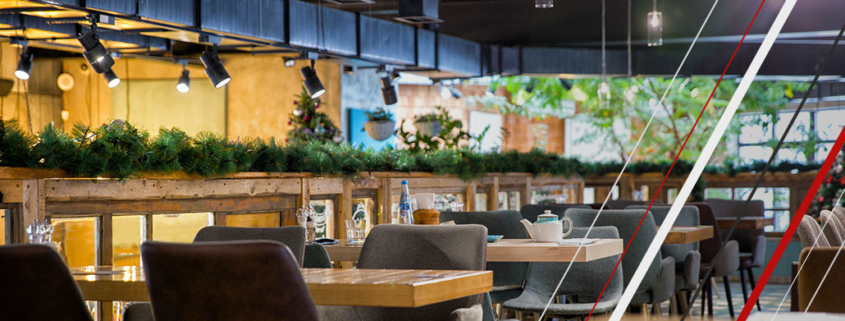Tag Archive for: care home
Fire Compartmentation in Hotels
/in Fire Protection, Home Page news feed, NewsWhat is the Purpose of Compartmentation?
- Prevent the spread of fire, smoke and toxic gas
- Breaks the building down into manageable areas of risk
- Contains the fire to provide time for occupants to safely evacuate the premises
- All doors (including hatches, ducts and vertical shafts), floors, walls, and ceilings should be made with fire resistant materials specifically rated so that if a fire were to break out, they would contain the fire and smoke for long enough for people to evacuate.
- Where suspended or false ceilings are provided, fire resistant materials should extend up to the floor slab level above.
- Cavity barriers, fire stopping and dampers
What are the Fire Protection Systems?
Fire Safety Tips and Checklist for Hotels
- Provide fire safety training for all employees and have a detailed evacuation plan that is rehearsed at minimum twice a year.
- Fire risk assessments should be carried out annually or if there have been changes made to the building.
- Fire alarms should be tested weekly.
- Equipment checks, training and fire evacuation drills should be recorded in the fire safety book.
- Emergency lights should be fully functioning and tested at regular intervals. They are mandatory in stairwells, hallways and public rooms.
- Fire doors should be in full working order with no damage to them and should never be wedged open.
- Checks of the building where fire alarms and escape routes are tested.
- Fire action notices should be made available at all call points and in resident’s rooms so they are clear of the evacuation plan in the event of a fire.
- All emergency exit signs should be visible and illuminated.
- Fire extinguishers should be checked for damage and arranged to be replaced as soon as possible.
The Broadsword Promise
Passive Fire Protection in Hospitals
/in Fire Protection, Home Page news feed, NewsFire safety including passive fire protection in hospitals is of the utmost importance particularly when considering the number of potentially vulnerable people at risk on the premises. Hospitals could not only find themselves financially liable for millions of pounds in repairs, they could also face the possibility of prison sentences and fines should they be found negligent for not having the correct systems in place. The cost of not complying with the law far outweighs the cost of installing the correct systems and should be a priority for all healthcare facilities.
What is Passive Fire Protection?
Passive fire protection is the use of fire-resistant materials and structural components that look to separate the building into different areas of risk. Essentially, they work to slow the spread of fire and smoke, to protect the structural integrity of the building and to provide time for all occupants of the building to evacuate. Passive fire protection is a component of a total fire protection system that looks to collaboratively suppress and resist fire. Passive fire protection looks to contain fire and is achieved through the installation of columns, walls, floors and doors. Each of these need to prevent structural collapse, heat conduction and the spread of smoke and noxious gases to be considered effective.
Fire Safety and the Law
Lessons from History
What Passive Fire Protection is required in Hospitals?
- Fire Doors and Compartmentalisation – Hospitals face unique challenges when considering fire evacuation due to the consideration required to be given to vulnerable patients receiving care. The condition of these patients may result in total evacuation not being possible. With this in mind, fire doors and compartment lines are essential for the building’s fire protection strategy, preventing the spread of fire and smoke and allowing time for patients to be recovered. Compartmentalisation is critical when containing a fire and is achieved through the use of fire resistance floors, walls and cavity barriers. All fire-resistant materials are rated to withstand fire for a certain amount of time. Currently, the fire doors in NHS hospitals offer 30 minutes of protection with some offering more in buildings containing more vulnerable patients where evacuation may take longer.
- Fire Door Survey and Restoration – As well as installing the right type of fire doors, it is essential to that they are checked regularly to ensure their efficacy in the event of a fire. With many fire doors being used by the hospital on a daily basis, it is not uncommon for them to be damaged by trolley, wheelchairs and people. Significant damage to a fire door will affect its fire resistance rendering it inoperative. To prevent this from happening a fire door survey by a qualified inspector is recommended. Should fire doors not be compliant, a restoration service can be sought to bring the quality of the door back up to standards and remain compliant.
The Broadsword Promise
Fire Protection in Care Homes
/in Fire Protection, Home Page news feed, NewsA government report relating to fire showed that 47% of all fatalities from fires in England were people aged 65 and above with the most common cause being overcome by gas and smoke. Based on this the elderly are 10 times more likely to die in a fire than young people. For this reason, it is paramount that fire procedures within care homes must be meticulous. There is a lot more to consider than just a clearly signed fire exit or strategically placed fire extinguisher. Care home residents are often less mobile or completely bed bound, they could suffer from illnesses such as dementia or hard of hearing. All of these health issues pose significant concerns when considering fire safety and protecting residents in the event of a fire.
Who is Responsible?
Fire safety measures and the requirements are covered under the Fire Safety Order and the Care Act which is regulated by the Care Quality Commission. Under the Fire Safety Order, a responsible person must be appointed to have overall responsibility for fire safety. This is the employer, owner or controller of the premises. In a care home, the responsible person is usually the care manager.
The appointed responsible person/care manager is required to do the following:
- Take all reasonable fire safety precautions to protect their staff and residents
- Carry out a fire safety risk assessment and have it reviewed regularly
- Eliminate or reduce dangerous substances within the care home
- Premises is fitted with appropriate fire-fighting and fire detection equipment
- Routes to fire exits are clear of obstructions
- Carry out fire evacuation drills and ensure plan is sound
- Appoint fire wardens to assist in managing fire safety
- Ensure all dangerous substances used within the care home are labelled and stored away
- Maintain fire protection systems to ensure they are working
- Ensure fire safety procedures are communicated to employees and visitors
- Train all employees on fire safety
Completing a Fire Risk Assessment
It is a legal requirement for the responsible person to get a fire risk assessment done for the care home premises and it will need to be reviewed and updated as appropriate. The fire risk must show that reasonable precautions are taken against all risks identified in order to protect the safety of their employees and residents. As care homes are high risk, the responsible person would need to ensure that the person carrying out the risk assessment has sufficient qualifications in fire safety.
The risk assessment is required to identify the potential ways a fire could start within the care home, identify all the people at risk, evaluate those risks and what steps are going to be taken to remove or reduce them and include evacuation plans, routes and trainings that staff and residents will have relating to fire safety.
Evacuation Plans, Drills and Training
The responsible person must devise an evacuation plan for the care home. It is a legal requirement for this to be in place and it must be frequently rehearsed in the form of a drill. Employees will need to be aware of the evacuation plan and when drills are to take place. Additionally, fire wardens must be appointed, the number required is dependent on the number of staff employed at the premises. For residents with health concerns that will impact on their ability to evacuate the premises, a Personal Emergency Evacuation Plan (PEEP) will need to be completed outlining their condition and what action needs to be taken to mitigate risks. A PEEP needs to be completed before the resident joins the care home and will need to be reviewed 14 days after they arrive once the staff have got to know their needs. It will then be reviewed every 6 months or if there is a significant change to the residents’ health.
Fire Protection Systems
The fire precautions that have been outlined in this article so far have all come under the category of fire safety management. This is one of three precautions that the Fire Safety Order requires a workplace to have installed. Alongside fire safety management, the responsible person is required to have adequate passive and active fire protection systems in place. Whilst fire safety management is generally something the responsible person can do with some assistance from compliance manuals, the installation of active and passive fire systems require the knowledge and expertise of professionals and so it will be the job of the responsible person to find them.
Active fire systems are installed to detect and suppress fires. This can range from smoke detection systems within residents’ rooms and the rest of the care home to a sprinkler system set up in the building to actively keep the fire at bay until the fire brigade arrive. It is important that the correct fire-fighting equipment and systems are installed and reviewed to ensure that all are in good working order.
Passive fire protection systems are the use of fire-resistant materials to compartmentalise the care home to slow the spread of fire and smoke, protect the structural integrity of the building and to provide time for all staff and residents to evacuate the building without causing accident or injury. Having enough time to evacuate a burning building full of elderly residents with health concerns is going to be paramount for any care home and so it is vital that these systems are of good quality and installed to a high standard.
Put simply, implementing good fire safety within your care home could be the difference between life and death. This is a legal requirement and if the responsible person of the care home fails to carry out any of these requirements, they will be facing charges of negligence and prison time.
The Broadsword Promise
At Broadsword, we understand the responsibility that care managers have to comply with the law, protect their building and ensure the safety of their staff and residents. This is a job that needs to be done correctly, first time. As a FIRAS accredited company, Broadsword have the knowledge and expertise to ensure fire safety compliance for all required works without the need for additional contractors. It is our promise to you to carry out work to the highest standard and the utmost professionalism. Care managers never need to worry again with the peace of mind of total fire protection.




